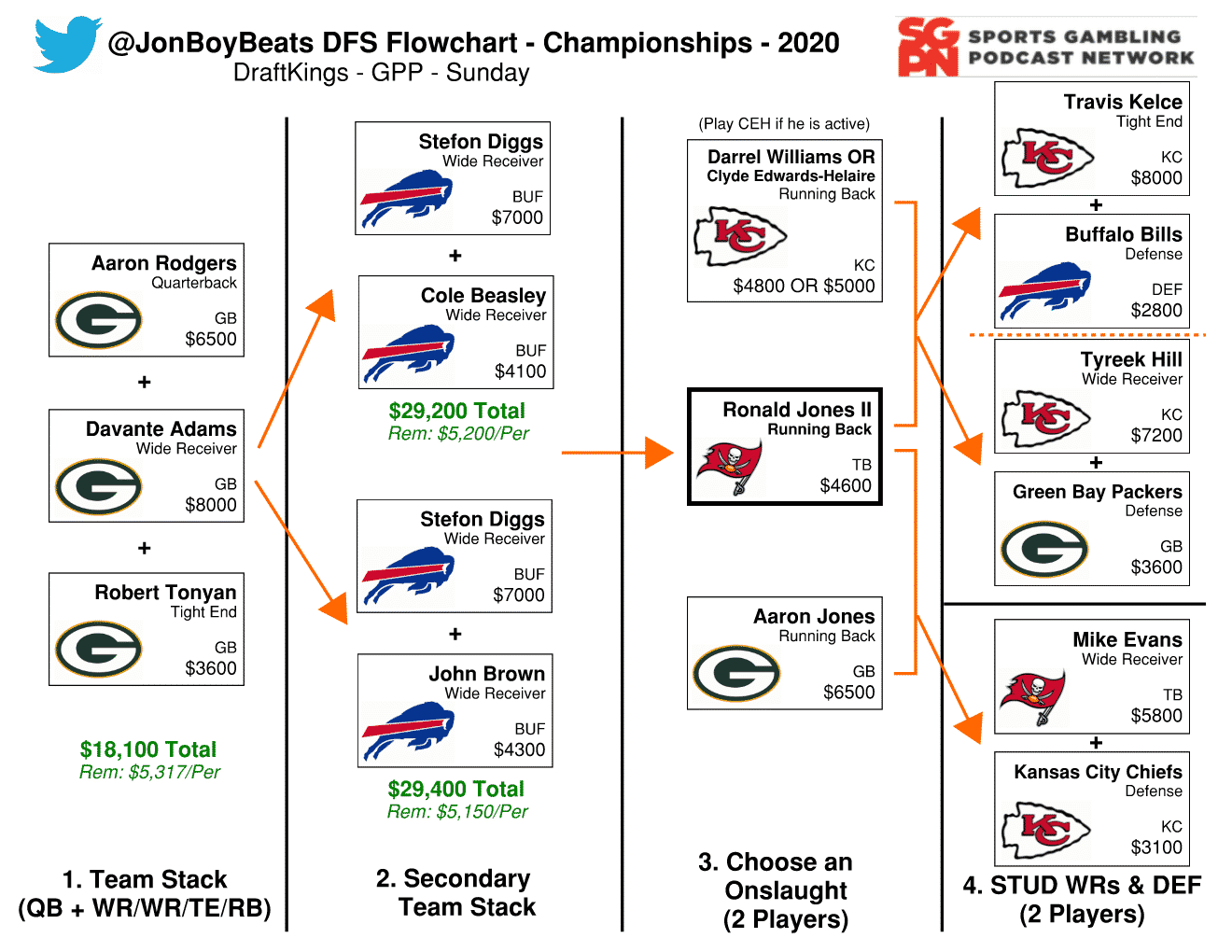Draftkings Value Calculator
- Draftkings Value Calculator Estimate
- Draftkings Salary Values In Excel
- Draftkings Value Calculator Value
- Draftkings Player Values
How the Pros Make Money Playing Daily Fantasy Football (FanDuel & DraftKings)
Understanding Site Salaries
The ability to determine a players value vs their point production (output) is what separates the professional Daily fantasy football players that are making money playing Fanduel and Draftkings vs those who are losing money.
The big hitters may be obvious, but Erik Halterman also discusses a couple value bats to help build your lineups. DraftKings MLB: World Series Game 5 Breakdown After an exciting finish on Saturday, Justin Bramlette offers his top picks for tonight. DraftKings is now in 10 states that the company says represents roughly 20 percent of the U.S. Get $100 FREE for Signing Up at DraftKings in Michigan Read now The company is still spending more money than it brings in on marketing alone ($191 million), driven by the fact, Robins said, that DK was now operating in seven new states. Shop for Low Price Draftkings Tax Info.Price Low and Options of Draftkings Tax Info from variety stores in usa. Draftkings Tax Info BY Draftkings Tax Info in Articles Shop for Low Price Draftkings.
Fantasy football is a game based on risk and reward. A player’s value can only be determined by their expected production exceeding the cost to draft them. There is no way to determine “value” without some idea of the cost.
It’s no different than your season long fantasy league; the cost would be a player’s average draft position. In daily fantasy, the cost is much easier to understand. Every DFS site whether its FanDuel or DraftKings, provides salaries for each player, and only way to determine a players value is by comparing a player’s salary vs his anticipated production.
After all, the actual production you receive from a player is not as important as the production you receive relative to his salary. That’s why daily fantasy players create spreadsheets to determine a player’s actual value by their cost per-point of production to figure out which players are the best values and how to best optimize lineups. Player salaries are an absolutely vital aspect of understanding value.
What do I mean by cost per point of production?
For example in your season long league, if you drafted Mike Evans in round 5 and he gets you 160 fantasy points this year or Vincent Jackson in round 3 and he gets you 170 fantasy points, who is the better value? Clearly Mike Evans is the better value. Daily fantasy football is no different, except every week we need to know which player will give us the most production for their designated salary.
In daily fantasy sports, if you draft Aaron Rodgers at a cost of $9900 and you project he will get you 30 points or Matt Ryan for $6000 and you project he will get you 20 points, who is the better value?

The best value play was D’Andre Swift at $5,100 scoring 25.9 DraftKings points. Ezekiel Elliott – Dallas Cowboys (DK: $6,500/$406 DPP — FD: $8,000/$533 DPP) In his first five games of the season Elliott was elite, scoring an average of 22.74 DraftKings points with a price tag that was over $8,000 on DraftKings. DraftKings stock price target raised to $80 from $65 at Canaccord Genuity Mar. 1, 2021 at 8:58 a.m. ET by Tomi Kilgore DraftKings stock price target raised to $58 from $48 at J.P.
To calculate a price of a players point of production we divide a players salary by the projected points we think a player will score.
Aaron Rodgers $9,900/30(pts)= $330 per point of production
Matt Ryan $6,000/20(pts) = $300 per point of production
Clearly Matt Ryan is the better option for two reasons. First, he costs less per point of production and second, selecting Ryan for you lineup saves you $3,900 in cap space. That’s HUGE when you only have $60,000 cap space to spend on FanDuel and $50,000 cap space available to spend on DraftKings.
Why is this great when Rodgers will score more points?
Because using Rodgers gives you less to spend on other player positions. This means you will be sacrificing production in other positions because you can only afford lesser quality players.

Selecting Ryan gives you allows you to select a stud wide receiver or running back in you lineup that will make up the production lost between Rodgers and Ryan.
Another point Daily Players consider is a players ceiling vs their floor. What that means is Rodgers floor is lowest points you expect Rodgers to score and his ceiling is the most you think Rodgers will score. Now going back to our calculations what if Rodgers floor is 20 points and his ceiling is 30 points?
Rodgers $9,900/20 points = $495 per point!
Draftkings Value Calculator Estimate
If Rodgers doesn’t produce, your spending $495 per point and that is just too expensive and will cost you in other areas of your team. If Ryan gets his 20 points it only cost you $300 per point!
Determining Value Across Different Positions
I covered how to determine a players value based on the same position, but how do you tell if a players fantasy production value is worth the price across positions? If Gronk cost you $7,000 and Calvin Johnston costs you $9,500, who is more valuable?
Using All the Information Available to Make Your Selections
So why doesn’t everyone make and perform spreadsheet analysis?
For starters, it’s very time consuming to make a spreadsheet, entering each player’s name, their salary, coming up with their expected production, and then calculating their cost per point of production. Imagine doing that for every position? That’s why professional daily fantasy football players do this, because they make a living playing daily fantasy sports, so its worth it ot them to do this whereas the average person does not have the time to do this. Then after doing that you need time to perform the analysis
So how can the average guy even the odds and create a spreadsheet or obtain this player cost per point of production data?
Lockdown Corner now offers this salary vs projection price per point of production information. We can send you the most used players salaries on FanDuel and DraftKings. We calculate their production based on the average projected points by fantasy “gurus” and calculate the cost per point of production. Having this data allows you to turn your projections into value ratings without the hours’ worth of work involved
How to use Cost Per Point of Production Data?
I will get into this in another article. This data is a great guide for users but the human factor is still important in creating your teams. Knowing who is injured, who is starting, and strength of matchups are extremely important.
How To Identify Value When Drafting Your Daily Fantasy Sports Lineups
We spend a lot of time on this site talking about your draft strategy in daily fantasy sports. If you want to win, it’s essential that you come up with an effective method for picking players. One critical factor that must be taken into account is player value. If you can identify good values while building your lineup, you’ll be in a better position to cash in.
In a moment, I’m going to show you how to calculate player value. The method you’ll learn below is one of many. It’s not my goal to explain every approach on this page. Nor should you spend a lot of time learning them on your own. For now, focus on learning and applying the method I’ll show you below. Test things and make changes as you gain experience.
Let’s start off with a simple way to rank players based on their respective track records. It’s a good introduction to thinking about player value every time you draft a lineup. I’ll then show you a 4-step process to defining value with a bit more accuracy.
Learn the terms before you jump into drafting. Click here for terms of the games.
An Easy Way To Rank Daily Fantasy Sports Players
A majority of DFS contests force you to work under a salary cap. Because you only have so much money with which to build your roster, you want to stretch every dollar as far as possible. The challenge is to identify value as a reflection of each player’s salary.
The easiest way to do that is to divide each player’s salary by the average number of fantasy points he has scored per game during the current season. Then, rank the players by those results. The good news is that the top daily fantasy sports sites – e.g. FanDuel and DraftKings – provide the numbers you need.
To see how this works, let’s use an example from FanDuel. We’ll rank some of the pitchers scheduled to play in tonight’s $15K Monday MLB Squeeze. Here are the 5 pitchers with the highest salaries along with their average fantasy points per game (FPPG).
Johnny Cueto – $9,900 – 15.9
Michael Wacha – $8,700 – 12.1
Jeff Samardzija – $8,000 – 11.1
Yordana Ventura – $7,900 – 11.2
Hyun-Jin Ryu – $7,100 – 10.8
Now let’s divide each pitcher’s salary by his FPPG…
Johnny Cueto – $622.64
Michael Wacha – $719.01
Jeff Samardzija – $720.72
Yordana Ventura – $705.36
Hyun-Jin Ryu – $657.41
The dollar figures above represent how much you would pay for each point that is scored in tonight’s games. You can see that Cueto and Ryu are the best values, point for point.
It’s worth pointing out that average FPPGs aren’t the best numbers to use when calculating value. They don’t give you any insight regarding whether a player is on a hot or cold streak. If you want better accuracy, divide each player’s salary by the points projections posted by Vegas oddsmakers. That requires a bit more research.
For a quick and dirty method, it’s hard to beat the approach I’ve outlined above. Just realize that it’s sorely limited.
Let’s now take a look at a 4-step process for calculating player value. It’s more involved and requires more effort. But going through the process is definitely worthwhile.
Step #1: Establish A Target Score For Your Lineup
In this step, you’re answering the question “how many points will I need to score in order to rank in a winning position?” It’s not as simple as it seems. The question is complicated by 3 factors: the type of sport, the contest format, and the DFS site.
The number of points you need to win a daily fantasy baseball contest will be different than the number you need to win a basketball or football contest. Each sport uses a different scoring system.
The contest format is also important. As a general rule, you need to score a higher number of points to win a large-field tournament than you need to win a 50/50 contest. Here’s a rough guide for daily fantasy MLB games at FanDuel and DraftKings.
Draftkings Salary Values In Excel
FanDuel MLB 1st Place Score:
Large-field tournaments – 60 to 65 points
50/50s – 40 to 45 points
DraftKings MLB 1st Place Score:
Large-field tournaments – 150 to 160 points
50/50s – 90 to 100 points
Note that FanDuel uses a 9-player roster that includes a single pitcher while DraftKings uses a 10-player roster with 2 pitchers. Also, DraftKings uses a scoring system that awards more points than FanDuel for specific feats. For example, you’ll earn 3 points for a triple at FD and 8 points for a triple at DK.
Step #2: Calculate How Many Points Each Player Should Score
Now that you’ve established a target score, do a simple calculation to figure out how many points, on average, each player in your lineup should score. You’ll need to take your salary cap into account.
Over at FanDuel, you have $35,000 to draft a 9-player roster. If you’re playing in a large-field contest, you’ll need 60 to 65 points to win (again, that’s just an estimate). Using the top end of that range (i.e. 65), each player you draft should score 7.2 points (65 divided by 9). If you’re playing in a 50/50, in which case you’ll need 45 points to win, each player will need to score 5 points (45 divided by 9).

At DraftKings, you have $50,000 to draft a lineup of 10 players. For a large-field contest, you’ll need 160 points, or 16 points per player. For a 50/50, you’ll need 100 points, or 10 points per player.
Keep in mind that your pitcher is probably going to rack up more points than any other player in your lineup. That means you’ll need to adjust the average number of points needed per player to reflect the pitcher’s higher production. How big of an adjustment should you make? Count on your pitcher scoring 20% to 25% of your team’s points.

I’ll show you the math in Step #4 below.
Step #3: Determine The Number Of Points Needed Per $1,000 In Salary
This step isn’t critical, but adds depth to the overall picture of which players are undervalued and which ones are overvalued. The good news is that the math is very simple. You divide the total number of points you need to score in order to win by your salary cap.
Here’s an example:
In Step #1, we determined that you’ll need (roughly) 160 points to win a large-field MLB tournament at DraftKings. You know that you have a $50K salary cap. Divide 160 by 50 to get 3.2. That’s the number of points you need to accumulate for every $1,000 you spend.
Here’s another example:
We determined earlier that you’ll need (roughly) 45 points to win a 50/50 MLB contest at FanDuel. You only have $35,000 to build your lineup. Dividing 45 by 35 results in approximately 1.3. That’s how many points you need to earn for every $1,000 you spend.
Step #4: Find Players Whose Average FPP Matches (Or Exceeds) The Target
Let’s recap.
From Step #1, you know how many points you need in order to cash in – that is, finish in a position that gets paid – for big tournaments and 50/50s. Step #2 gave you the number of points, on average, each player in your lineup needs to accumulate in order for you to hit your target score. Step #3 revealed the number of points you need to earn per $1,000 spent.
Now that you have these figures, you can focus your attention on drafting players who offer the value you need.
Let’s go through an example to see how the entire calculation works. Fair warning: there’s quite a bit of math. But it’s very simple.
We’ll use tonight’s $15K Monday MLB Squeeze at FanDuel. It’s a large-field event – up to 8,330 players can join – with a guaranteed prize pool of $15,000.
You need to score 65 points (using the upper-bound of the range) if you hope to win the event. Given a 9-player lineup, each player needs to score an average of 7.2 points. Also, given a $35K salary cap, you need to bring in 1.9 points per $1,000 spent.
Now, let’s adjust those numbers to reflect the higher number of points your pitcher will score. Assuming your pitcher will earn 20% to 25% of your total score, you need him to bring in between 13 and 16.25 points. Assuming your 8 hitters – the remainder of your lineup – will earn 75% to 80% of your score, you need them to bring in between 48.75 and 52 points total. That works out to between 6.09 and 6.5 points per player.
Let’s suppose you have your eye on Miguel Cabrera. He’s averaged 3.2 fantasy points per game this season and commands a salary of $5,000. First, can he deliver the average number of points per player you need in order to win (i.e. between 6.09 and 6.5 points)? It’s unlikely.
Second, can he be expected to deliver 1.9 points for each $1,000 you spend on his salary (i.e. 9.5 points)? Again, it’s unlikely based on his track record this season.
Given the above, you’d probably be better off passing on Cabrera.
Problems With Calculating Player Value In Daily Fantasy Sports
At this point, you may be thinking that there are a lot of problems with the method I’ve outlined above for calculating value. And you’d be absolutely correct.
For example, it doesn’t take into account that some starting players get injured, opening the door for low-profile, low-salary replacements to start. Those replacements will suddenly offer more value than previously calculated.
Draftkings Value Calculator Value

The above method also fails to recognize that some hitters do especially well when they’re matched up against select pitchers. And of course, some hitters flounder against select pitchers.
Draftkings Player Values
It also neglects to consider hitter-friendly and pitcher-friendly parks. Also, what about low-scoring games that throw off your target score?
So, yes. There are definitely limitations to the calculation method I’ve laid out above. That doesn’t mean you shouldn’t use it to identify player value. It just means it’s less than perfect.
Learn other strategies for MLB here.
You can definitely build a forecasting model that takes into account all of the above factors (along with many others). You’ll need a spreadsheet and lots of time, but it can be done. The advantages of using the model I’ve given you above is that it’s simple, relatively quick to apply, and is a useful guide in a salary cap draft.
Take it for a test run the next time you compete in a daily fantasy baseball contest at FanDuel or DraftKings. Over time, tweak the model to complement your own draft strategy.
image credit: Draft, Target